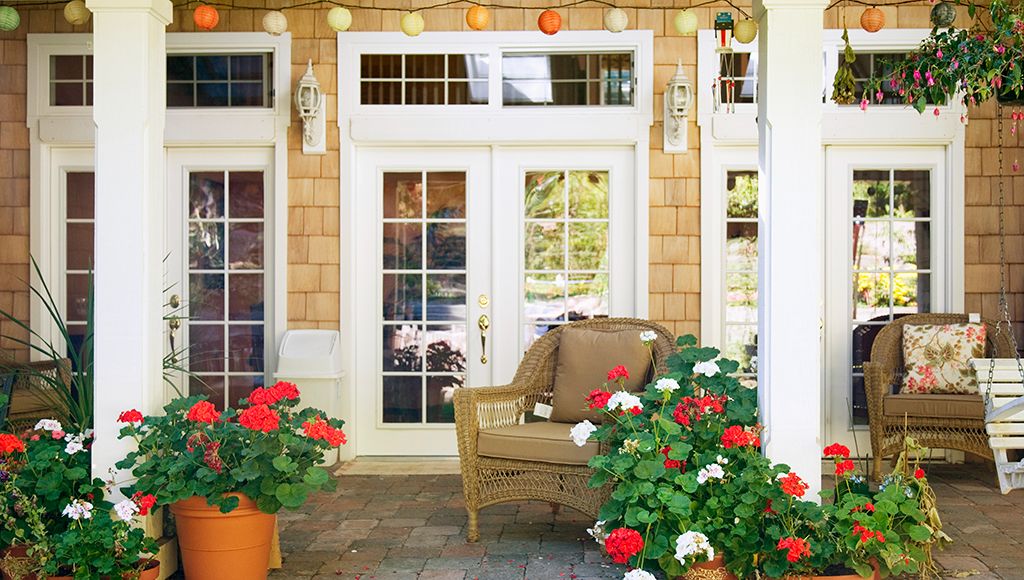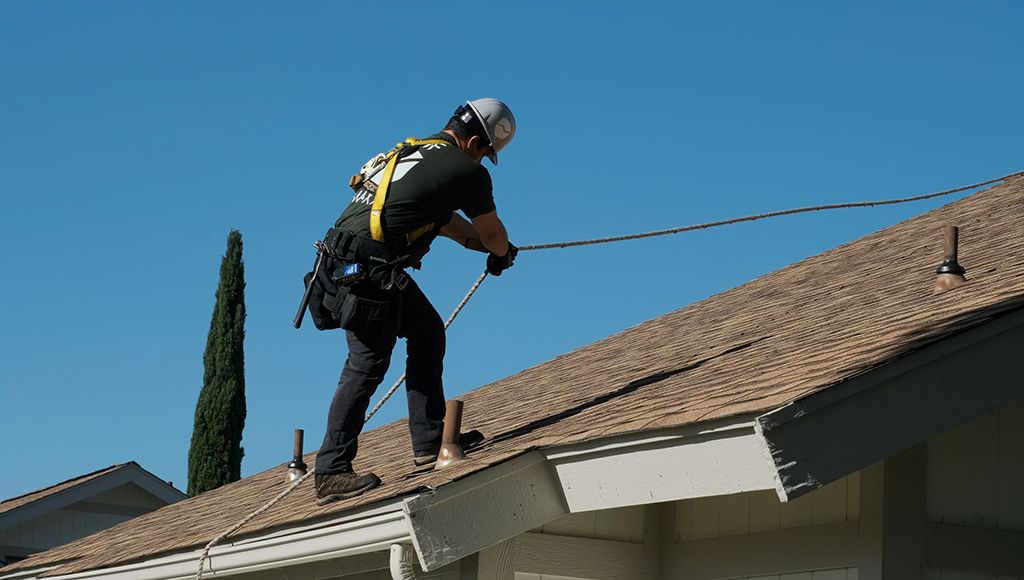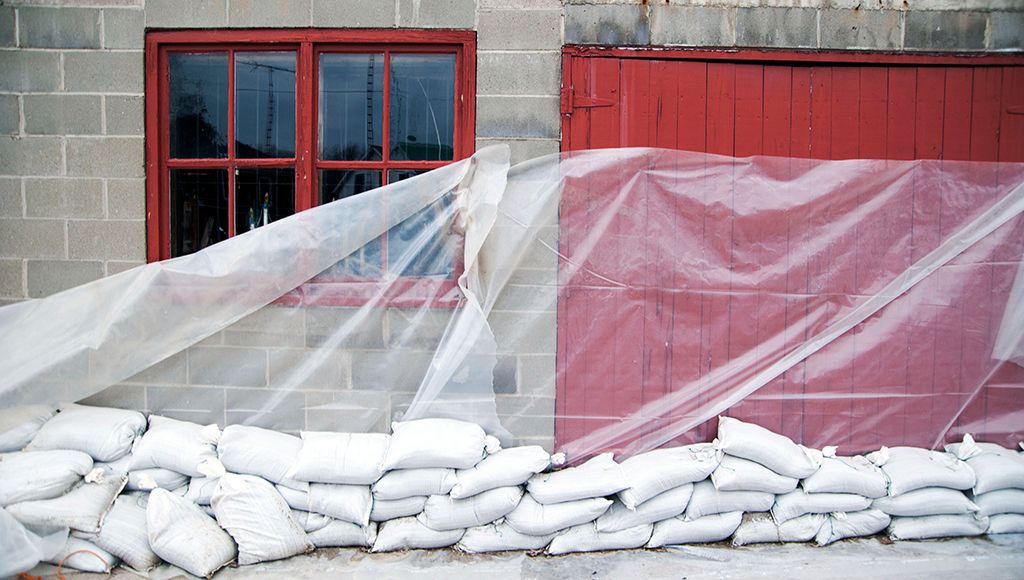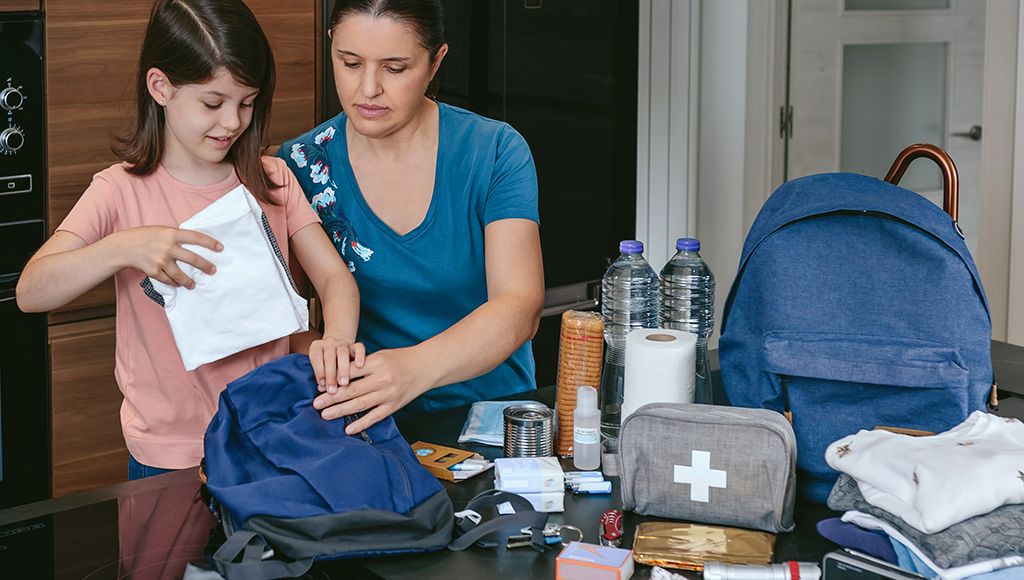Staying on top of local and national weather reports is the best way to know when a hurricane is coming, but awareness alone won’t save your home from high winds, heavy rain, and impact damage. If you live in a region where severe storms are common, you also need to physically hurricane-proof your home.
Investing in hurricane-resistant features provides long-term protection, but it’s just one of the many ways to reduce your risk for storm damage. In this guide, you’ll learn how to batten down the hatches like a pro so your home and loved ones stay safe when severe weather strikes.
Remember, a strong roof is your first line of defense—and Roof Maxx can help. Our plant-based solution helps extend the life of your asphalt shingle roof by re-infusing your shingles with lost oils, so they stay durable and flexible in all types of weather.

Windows are one of the most vulnerable parts of your home during a hurricane. Standard residential windows have a design pressure (DP) rating of around 15 to 30, which translates out to an ability to handle winds of up to 110 mph. Beyond that, the risk for damage increases exponentially.
There are two main ways to mitigate these risks:
Use both protection methods for maximum protection in very high-risk zones along the coast.
Exterior doors are another common weak point. During severe storms, doors can suddenly blow open with enough force to tear them from their hinges. That’s bad news for your home, your pets, and your loved ones. To lower your risk, try these methods:
Don’t take risks by opening the door to peek outside during a hurricane, either. Once those high winds catch it, it can be difficult or downright impossible to get it closed again.

It might seem your roof just protects you from rain, but it actually helps hold the entire structure of your house together. If it fails during a storm, the rapid change in pressure can lead to structural damage, collapsed walls, and severe roof leaks. To lower your risks during storms, don’t skip annual inspections.
Loose or damaged shingles are vulnerable to being torn off in high winds. This can potentially expose your home to serious leaks during the storm and after. Asphalt shingle roofs are the most vulnerable because they tend to harden and dry out as they age, so it’s easier for wind to tear them away.
Keeping your roof in good condition is the best remedy, but there will come a point where replacement is necessary. Roof Maxx can help by rejuvenating your asphalt shingles and restoring their flexibility so they’re better able to withstand heavy rain and high winds. Scheduling a treatment at the first sign of granule loss can potentially extend the life of your asphalt shingle roof by up to 15 years.
Clogged gutters can cause water to back up during storms and lead to roof leaks or foundation issues. To mitigate risks like these before storms arrive:
We don’t recommend climbing up on your roof unless you know how to do so safely. Call your local roofing company for more help with tasks that require any up-close attention before or after storms.
A secondary water barrier can provide extra protection against roof leaks if you lose a shingle during a storm. This is a special layer of rubberized, self-adhering, and self-sealing polymer-based material that sits under your shingles for added protection.
Installing a secondary water barrier can be pretty invasive, so it’s not the kind of task you should try to DIY on your own. It’s best to leave the job to a pro who can handle the job during roof maintenance or as part of a planned roof replacement.

Any inadequately secured object in a hurricane is a projectile waiting to happen. That means trees, their branches, toys, and even patio furniture can be seriously dangerous in high winds. Thankfully, this is one of the easiest risks for homeowners to reduce on their own—no special equipment required!
Last but not least, think hard about any very old or unhealthy trees on your property. If they’re showing signs of die-off, rot, or fungal invasion, the risk for them to come down during storms is much higher.
Did You Know? Roof Maxx contains a natural fungicide that can help prevent mold, mildew, and algae from nearby trees from spreading onto your roof. It also helps ward off moss!
Sheds, pool houses, and other outbuildings can suffer the same damage as your home during a storm, but they can also break apart and create dangerous projectiles in high winds. Anchoring them down may be enough in some regions, but in high-risk zones, you should take extra precautions.
For example:
It might go without saying, but remember to close all doors, skylights, and other openings before the storm arrives. All the anchors in the world won’t save a door that’s left blowing in the wind!

Flood vents allow water to flow through enclosed areas like crawl spaces, which can help reduce pressure on the foundation during a storm. As the name suggests, they’re particularly useful in areas with a high risk for floods where inches of rain can fall in very little time.
Installing flood vents usually involves creating holes in your foundation or walls, so this is another job you shouldn’t try to tackle on your own. The vents need to be positioned just right for optimal condition, so it’s best to work with a contractor who knows how to get the job done right.
Place sandbags or temporary flood barriers around entryways and vulnerable areas to prevent water from entering. Follow these best practices to get the best results:
It may seem like overkill to place sandbags even before the storm arrives, but they can save you thousands of dollars in damage if flood waters arrive.
If you’re in a flood zone, you should also consider elevating any critical systems and electronics at least a few feet off the ground. Water can damage sensitive components directly, but it can also enter your home through outlets. To mitigate this risk:
Taking steps like these will help to flood-proof your house before a storm.

You know how to protect your roof and home, so now it’s time to talk about how to protect something that matters even more: Your family. Ready.gov can help you build a kit full of supplies to keep you safe in the event that you need to shelter in place for several days.
Include these essentials:
Camping toilets are also a great investment—if you lose bathroom access, they’ll make sheltering in place much more sanitary and comfortable for everyone.
Take the time to map out a safe evacuation route and establish a meeting point for family members well in advance of any storms. Hold practice runs or drills regularly to ensure everyone is familiar with the route and procedures, especially if you have kids.

From installing hurricane-proof windows to maintaining a strong roof, being proactive is your best defense against flooding, high winds, and impact damage during a hurricane. By prioritizing regular maintenance, planning for emergencies, and taking proactive steps to keep your home and loved ones safe during hurricane season, you increase your chances of storms blowing over without causing harm.
Start preparing your home now, and use the opportunity to explore how Roof Maxx can reinforce your asphalt shingle roof. It’s an intelligent way to protect your entire structure from the top down and ensure you have a storm-ready home. Connect with a dealer in your area now for a no-obligation free quote.
As asphalt shingles age, they begin to dry out, which can lead to granule loss, cracks, and breakage in high winds. Roof Maxx re-infuses them with lost oils to make them flexible again, so they’re better able to withstand the high winds and heavy rainfall that come with hurricanes.
Roof Maxx is a budget-friendly alternative to roof replacement for homeowners who need to take action and improve the condition of their asphalt shingle roof before storm season arrives. A single treatment can extend the life of your roof by up to 5 years—or 15 years with repeated treatments.
Yes! Our all-natural plant-based solution aligns with sustainable practices by reducing waste and contributing to a safer, more resilient home. It’s lab-tested for safety and won’t harm the environment, pets, or kids—so you can feel good about using it as an alternative to early roof replacement.
Roof Maxx treatments won’t void most homeowner insurance policies since they preserve the integrity of the roof without altering its structure. If anything, it may help you keep your coverage by showing insurers that you’re serious about prolonging the life of your roof—but check with your provider to be sure.
With our five-year, transferable warranty, you’ll enjoy the peace of mind that your roof and entire home are protected.
Roof Maxx Technologies LLC